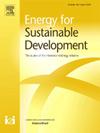The role of regional grid connectivity and cooperation for Decarbonisation: A case study of South and South East Asia
IF 4.4
2区 工程技术
Q2 ENERGY & FUELS
引用次数: 0
Abstract
As the share of renewable energy expands, cooperation at a wider level is required. In South Asia (SA) and Southeast Asia (SEA), cross-border power trade already exists. Both regions are moving toward high levels of integration. Sub-regional and interregional interconnections and regional cooperation can help reduce the use of fossil fuels and increase the absorption of renewable power in power systems. Using optimization models for the Bangladesh-Bhutan-India-Nepal (BBIN) countries, the article demonstrates significant CO2 savings (403 million tonnes) resulting from the renewable Energy (RE) potential of Bhutan, India, and Nepal, meeting the required electricity demand for GDP growth. In South Asia, each country can benefit from trading, meeting their demand, and decarbonizing at a lower cost. Similarly, the countries of the SEA region can also grow. By 2050, the power generation in the SA and SEA regions can reach 5880 and 5681 Terra-Watt-hours (TWh), respectively. Smaller countries with large potential for RE, such as Bhutan, Nepal, Laos, and Myanmar, can export electricity and grow economically as they cannot use that much for their needs. Regional grid connectivity can provide additional benefits due to further trade opportunities arising from differences in time, seasons, costs, prices, resource diversity, and availability.
求助全文
约1分钟内获得全文
求助全文
来源期刊

Energy for Sustainable Development
ENERGY & FUELS-ENERGY & FUELS
CiteScore
8.10
自引率
9.10%
发文量
187
审稿时长
6-12 weeks
期刊介绍:
Published on behalf of the International Energy Initiative, Energy for Sustainable Development is the journal for decision makers, managers, consultants, policy makers, planners and researchers in both government and non-government organizations. It publishes original research and reviews about energy in developing countries, sustainable development, energy resources, technologies, policies and interactions.
 求助内容:
求助内容: 应助结果提醒方式:
应助结果提醒方式:


